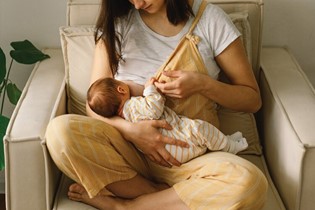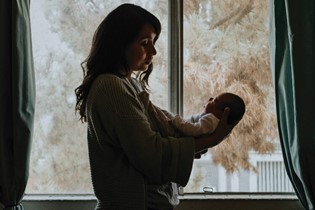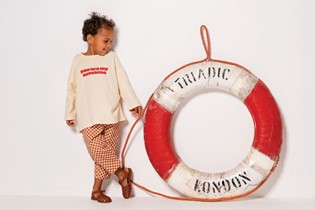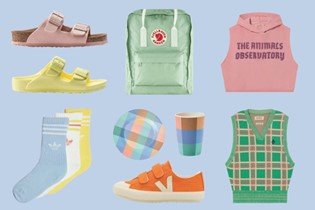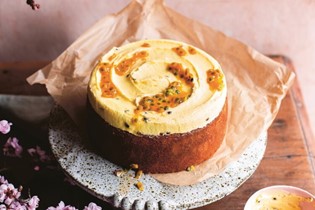A quick guide to introducing 100 foods in the first year

You may have heard about ‘100 First Foods’ or ‘100 Foods before One’ but what does this mean and how do you achieve it? Jennifer Douglas, Paediatric Dietitian at Jumpstart Nutrition explains.
Starting on solid foods is an exciting time with your baby, but it’s one that can feel quite confusing. In New Zealand we recommend starting your baby on solid foods around six months of age, but not before four months, when they are showing all developmental signs of being ready to start on solid foods. This means that you child can hold their head up, sit with less help, often put their hands in their mouths, can easily open their mouth when a spoon touches their lip or as food approaches, the tongue moves gently back and forth as food enters mouth, they can keep food in their mouth and then swallow it – instead of spitting the food out, and your baby is showing signs of biting and chewing movements.
There are two common approaches to starting on solids foods, which are the traditional spoon-feeding approach of offering smooth puree, then mashed foods, and finally chopped family foods by the age of 12 months. The other approach involves offering finger-sized soft finger foods from six months, which is commonly called ‘baby-led weaning’.
The saying, '100 First Foods' was started by an American Dietitian called Katie Ferraro who had seven children of her own, including a set of quadruplets, and wanted to find a simple way of feeding her children. Her concept of 100 first foods involved a stepwise approach to ensuring 100 foods are introduced in the first year of life. The baby-led weaning approach is not a new one and was first started by Gill Rapley in the UK around 2001 as a differing approach to starting solids, which involves offering finger foods from six months of age.
Whether you choose a traditional spoon-feeding approach or baby-led weaning approach (or both!) you can introduce 100 foods relatively easily within the first year of life with a bit of planning.
You may have been told that you need to introduce a new single food every three days, but following this approach could mean your child could be at school by the time they have eaten all the amazing foods that are on offer over the world! It's now recommended to try and introduce as many foods as possible into the diet within the first year to ensure your child has a well-balanced and varied diet in the future. We now say that the only foods that we introduce over three days are common allergen foods – this is to ensure that there is no adverse food reaction. Common allergy foods are egg, peanut, treenut, milk, soy, wheat, fish, seafood, and sesame. All other foods can be introduced as often as you like.
Once your baby has had a few weeks on solids, you should start introducing family foods that are either pureed/mashed or offered as finger foods (if they are over six months of age). You can increase to two-three meals once your baby is having around two tablespoons of food at each meal.
The only foods that your baby should avoid in the first year of life are added salt, sugar and honey, all other family foods should be introduced including herbs and spices (that don't have salt added). By offering a family meal you are immediately adding a variety of foods straight away into your baby’s diet. For example, if you offer a pureed curry, you are introducing onion, garlic, cumin, coriander, turmeric, chicken, carrot, peas, rice, coconut milk and whatever else you put into your family curries. Here we have just introduced at least seven new foods in just one meal! Therefore, getting to 100 first foods is not going to take you very long at all!
Starting solids does not need to be complicated, and enjoying family foods alongside your baby is likely to develop a long-lasting positive relationship with food.

GREAT FIRST FOODS TO START YOUR BABY ON
First vegetables
 Pumpkin (cooked as puree/mash/finger food)
Pumpkin (cooked as puree/mash/finger food)
 Carrot (cooked as puree/mash/finger food)
Carrot (cooked as puree/mash/finger food)
 Parsnip (peeled and cooked as puree/mash/finger food)
Parsnip (peeled and cooked as puree/mash/finger food)
 Kumara (peeled and cooked as puree/mash/finger food)
Kumara (peeled and cooked as puree/mash/finger food)
 Peas (pureed/sieved)
Peas (pureed/sieved)
First iron-containing foods
 Lamb (cooked, pureed/mashed/shredded or offered as long strips)
Lamb (cooked, pureed/mashed/shredded or offered as long strips)
 Beef (cooked, pureed/mashed/shredded or offered as long strips)
Beef (cooked, pureed/mashed/shredded or offered as long strips)
 Red lentils (cooked and pureed/mashed or made into small patties)
Red lentils (cooked and pureed/mashed or made into small patties)
 Egg (cooked and pureed/mashed or sliced into quarters lengthwise)
Egg (cooked and pureed/mashed or sliced into quarters lengthwise)
 Iron-fortified baby cereal mixed with breast milk/formula and vegetables/fruit
Iron-fortified baby cereal mixed with breast milk/formula and vegetables/fruit
 Smooth nut butters, eg peanut, almond, cashew
Smooth nut butters, eg peanut, almond, cashew
First fruits
 Avocado (pureed/mashed or sliced lengthways as finger food)
Avocado (pureed/mashed or sliced lengthways as finger food)
 Peach (peeled and stewed)
Peach (peeled and stewed)
 Apple (peeled and stewed)
Apple (peeled and stewed)
 Pear (peeled, stewed or fresh if soft and cut into thin slices)
Pear (peeled, stewed or fresh if soft and cut into thin slices)
 Banana (mashed or cut up)
Banana (mashed or cut up)
 Plum (peeled, stewed or fresh if soft and cut into thin slices)
Plum (peeled, stewed or fresh if soft and cut into thin slices)
 Apricot (peeled, stewed or fresh if soft and cut into thin slices)
Apricot (peeled, stewed or fresh if soft and cut into thin slices)
First grains
 Blitzed oats with breast milk/formula and vegetables/fruit
Blitzed oats with breast milk/formula and vegetables/fruit
 Quinoa mixed with vegetables and meat/lentils
Quinoa mixed with vegetables and meat/lentils
Jennifer Douglas is a registered dietitian with over 18 years of experience working with families as an expert on baby & child nutrition. Jenny runs clinics in Dunedin or sees families online to help manage food allergies/intolerances, reflux, gut problems, growth issues, fussy eating, and mealtime battles with simple and practical advice so that your family can eat well. For more information head to jumpstartnutrition.co.nz or Facebook: Facebook.com/JenniferDouglasDietitian and @jumpstart_kids_nutrition_nz on Instagram.

AS FEATURED IN ISSUE 63 OF OHbaby! MAGAZINE. CHECK OUT OTHER ARTICLES IN THIS ISSUE BELOW




